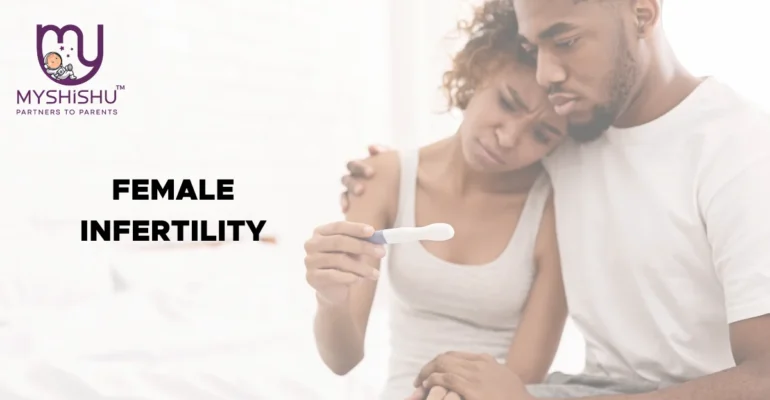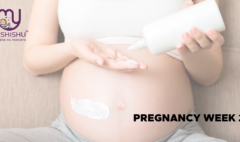Female Infertility: Symptoms, Strategies for Prevention
Female Infertility: Symptoms, Strategies for Prevention
Introduction
Female infertility, a silent struggle faced by millions, casts a shadow on the dreams of parenthood. In this comprehensive guide, we delve into the intricacies of female infertility, unraveling its complexities and offering a beacon of hope. By breaking the silence surrounding this deeply personal journey, we strive to empower couples with knowledge, resilience, and optimism. Join us as we navigate the uncharted waters of fertility challenges, debunk myths, and foster a community of support for those grappling with the profound desire to conceive. Together, let’s shed light on the nuances of female infertility, providing insights that illuminate the path toward realizing the dream of a growing family.
1. What is female infertility?
Female infertility, a poignant reality for many aspiring parents, is a condition marked by the inability to conceive after a year of regular, unprotected intercourse. At the core of this challenge lie various factors that intricately intertwine within the female reproductive system. Ovulatory disorders, such as polycystic ovary syndrome (PCOS), may disrupt the regular release of eggs, while structural issues like blocked fallopian tubes or uterine fibroids can hinder the seamless journey of sperm to the egg.
Moreover, hormonal imbalances, a delicate dance orchestrated by progesterone and estrogen, can influence the fertile landscape. Age-related factors also play a pivotal role, as fertility undergoes a natural decline with advancing years. In this section, we’ll explore the diverse facets of female infertility, shedding light on the physiological intricacies that contribute to this complex and multifaceted challenge.
2. Types of Female Infertility: Primary and Secondary Infertility?
Female infertility manifests in distinct forms, with primary and secondary infertility representing two key classifications, each influenced by age-related factors.
2.1 Primary Infertility: Primary infertility refers to the inability to conceive or carry a pregnancy to term after a year of regular, unprotected intercourse. This condition typically affects individuals in their reproductive prime, commonly defined as ages 20 to 35. During this period, women are generally considered to be at their peak fertility, but various factors, including ovulatory disorders, structural issues, hormonal imbalances, or unexplained fertility challenges, can contribute to primary infertility. Understanding and addressing these factors are crucial for developing an effective fertility treatment plan tailored to the individual or couple.
2.2 Secondary Infertility: Secondary infertility occurs when a woman who has previously conceived and carried a pregnancy to term faces challenges in conceiving again. This form of infertility can arise at any age but often becomes more prevalent as individuals enter their late 30s and 40s. Changes in health, age-related factors, or new reproductive challenges may contribute to secondary infertility. Addressing the underlying causes and considering appropriate fertility interventions are essential steps toward overcoming secondary infertility, with age acting as a critical variable in the evaluation and management of fertility challenges.
In the subsequent sections, we will delve deeper into each type, exploring the complexities, potential causes, and available interventions for primary and secondary infertility, taking into account the pivotal role of age in this intricate landscape.
3. How common is female infertility?
Female infertility is a prevalent concern affecting millions globally. Approximately 12–15% of couples struggle with infertility, with female factors contributing to about 40% of cases. Understanding the frequency of this challenge underscores the importance of open conversations, awareness, and accessible support for those navigating the path to parenthood.
4. Symptoms and Causes of Female Infertility?

4.1 Symptoms: Recognizing female infertility can be challenging as it often conceals itself behind subtle indicators. Keep an eye out for irregular menstrual cycles, characterized by unpredictable ovulation, which may point to underlying fertility challenges. Painful periods, hormonal imbalances manifesting as acne or excessive hair growth, and persistent pelvic pain are potential signs. However, it’s crucial to note that many individuals may not exhibit noticeable symptoms, underscoring the importance of proactive fertility evaluations for a comprehensive understanding of reproductive health.
4.2 Causes:
- Ovulatory Disorders: Conditions such as Polycystic Ovary Syndrome (PCOS) disrupt the intricate process of regular ovulation, impacting the release of eggs for fertilization.
- Structural Issues: Anomalies in the reproductive organs pose significant challenges. Blocked fallopian tubes, uterine fibroids, or structural irregularities hinder the smooth journey of sperm to the egg.
- Hormonal Imbalances: The delicate dance of reproductive hormones, including progesterone and estrogen, can be disrupted, affecting the menstrual cycle and fertility.
- Age-related Factors: Fertility experiences a natural decline with age, particularly after the age of 35, emphasizing the importance of timely family planning.
- Lifestyle Factors: Unhealthy lifestyle choices, including a poor diet, high-stress levels, smoking, and excessive alcohol consumption, contribute to infertility by disrupting the delicate balance of reproductive processes.
Understanding these symptoms and causes is crucial for early intervention and personalized fertility management. In the upcoming sections, we’ll delve deeper into diagnostic methods and potential treatment options for addressing these underlying factors, empowering individuals and couples with the knowledge needed to navigate the intricate landscape of female infertility.
5. The Leading Cause of Female Infertility: Unveiling the Role of Ovulatory Disorders
Among the intricate tapestry of factors contributing to female infertility, ovulatory disorders emerge as a leading cause. Conditions such as Polycystic Ovary Syndrome (PCOS) disrupt the regular release of eggs, a pivotal process for conception. PCOS, affecting approximately 1 in 10 women of childbearing age, introduces challenges by causing irregular ovulation or, in some cases, preventing it altogether. The impact on fertility underscores the significance of early detection and targeted interventions for individuals facing this prevalent cause of female infertility. In the subsequent sections, we’ll explore diagnostic strategies and effective treatments to navigate and overcome the challenges posed by ovulatory disorders on the path to parenthood.
6. Understanding the Risk Factors of Female Infertility?
Age, lifestyle choices, weight, stress, medical conditions, and reproductive history are key risk factors for female infertility. Advanced maternal age, unhealthy habits, imbalances in weight, high-stress levels, certain health issues, and previous reproductive challenges can contribute to fertility concerns, emphasizing the need for proactive management.
Symptoms of female infertility:
Recognizing symptoms is vital for early intervention. Irregular menstrual cycles, hormonal imbalances, and persistent pelvic pain may signal fertility challenges. Note: Many individuals may not exhibit noticeable symptoms, underscoring the importance of proactive fertility evaluations for a comprehensive understanding of reproductive health.
Here are a few symptoms:
- Irregular menstrual cycles
- Hormonal imbalances (e.g., acne or excessive hair growth)
- Persistent Pelvic Pain
- Painful Periods
- Changes in Menstrual Flow
- Recurrent Miscarriages
- Painful Intercourse
- Unexplained Fatigue
- Changes in libido
- Unexplained weight changes
7. How Age Impacts Female Infertility: Navigating the Biological Clock
Age plays a pivotal role in female fertility, influencing the likelihood of conception and a successful pregnancy. As women age, the quantity and quality of eggs naturally decline, leading to challenges in achieving and maintaining pregnancies. Advanced maternal age, typically considered after 35, is associated with a higher risk of ovulatory disorders, chromosomal abnormalities, and a decreased response to fertility treatments. Understanding the nuanced relationship between age and fertility is crucial for informed family planning and proactive fertility management. In the upcoming sections, we’ll delve deeper into the impact of age on female fertility and explore strategies for navigating this intricate aspect of reproductive health.
8. Diagnosis and Tests for Female Infertility: Illuminating the Path to Answers
Diagnosing female infertility involves a comprehensive and systematic approach, employing various tests to pinpoint underlying causes.
9.1 Medical History and Physical Examination: A detailed medical history and physical examination provide valuable insights into potential factors affecting fertility, including menstrual patterns, previous pregnancies, and lifestyle factors.
9.2 Ovulation Tracking: Monitoring ovulatory patterns through methods like basal body temperature charting and ovulation predictor kits helps identify irregularities in the menstrual cycle.
9.3 Hormone Testing: Blood tests measuring hormone levels, such as progesterone, estrogen, and follicle-stimulating hormone (FSH), provide critical information about ovarian function and hormone balance.
9.4 Imaging Studies: Pelvic ultrasound and hysterosalpingography (HSG) assess the condition of reproductive organs, identifying structural abnormalities, blockages, or uterine issues.
9.5 Laparoscopy: This minimally invasive surgical procedure allows direct visualization of the pelvic organs, helping diagnose conditions like endometriosis or pelvic adhesions.
9.6 Genetic Testing: In cases of recurrent miscarriages or known genetic disorders, genetic testing may be recommended to assess chromosomal abnormalities.
An accurate diagnosis is the foundation for effective fertility management. In the upcoming sections, we’ll explore potential treatment options tailored to address specific diagnoses, offering hope and guidance to those navigating the complexities of female infertility.
9. Navigating Your Appointment: What Your Healthcare Provider May Ask About Female Infertility
When seeking help for female infertility, your healthcare provider will guide the conversation to gather crucial information. Be prepared for questions related to:
10.1 Menstrual History: Details about your menstrual cycle, including regularity, length, and any changes, offer insights into ovulatory patterns.
10.2 Reproductive History: A comprehensive overview of previous pregnancies, miscarriages, or any reproductive challenges provides context for potential fertility issues.
10.3 Lifestyle Factors: Discussing lifestyle choices such as diet, exercise, smoking, and alcohol consumption helps identify factors influencing fertility.
10.4 Sexual History: Questions about your sexual activity and practices provide essential information about potential barriers to conception.
10.5 Medical History: Sharing details about existing medical conditions, surgeries, or treatments assist in assessing overall reproductive health.
10.6 Family History: Information about family history, including fertility challenges, genetic disorders, or early menopause, may guide diagnostic approaches.
10.7 Birth Control History: Discussing past and current use of contraceptives helps evaluate the return to fertility after discontinuation.
Being open and honest during this dialogue sets the stage for a collaborative and informed approach to understanding and addressing your unique fertility journey. In the upcoming sections, we’ll explore potential diagnostic tests and treatment options tailored to your specific situation.
10. Navigating Other Diagnostic Tests for Female Infertility: A Comprehensive Guide
When exploring female infertility, healthcare providers may recommend various diagnostic tests to uncover underlying causes. Expect discussions about:
11.1 Anti-Müllerian Hormone (AMH) Test: Assesses ovarian reserve, providing insights into the quantity and quality of eggs.
11.2 Thyroid Function Tests: Evaluate thyroid hormone levels, which are crucial for maintaining reproductive health and preventing ovulatory disorders.
11.3 Prolactin Test: Measures prolactin levels, identifying potential hormonal imbalances affecting ovulation.
11.4 Progesterone Challenge Test: Determines the responsiveness of the uterine lining, offering insights into the menstrual cycle and potential ovulatory issues.
11.5 Ovarian Reserve Testing: Includes tests like the Antral Follicle Count (AFC) and the Clomiphene Citrate Challenge Test (CCCT) to assess ovarian reserve and predict response to fertility treatments.
11.6 Genetic Carrier Screening: Examines carrier status for genetic conditions that may impact fertility or increase the risk of miscarriages.
Understanding the purpose and potential outcomes of these tests empowers individuals to actively participate in their fertility journey. In the upcoming sections, we’ll delve into potential treatment options tailored to address specific diagnoses, offering guidance and support to those navigating the complexities of female infertility.
11. Navigating Management and Treatment Options for Female Infertility
Managing and treating female infertility involves a tailored approach based on the identified causes. Expect discussions about:
12.1 Lifestyle Modifications: Implementing changes in diet, exercise, and stress management to optimize reproductive health.
12.2 Fertility Medications: Prescription of medications like Clomid to stimulate ovulation and enhance fertility.
12.3 Assisted Reproductive Technologies (ART): Incorporating procedures like in vitro fertilization (IVF) or intrauterine insemination (IUI) to facilitate conception.
12.4 Surgery: Correcting structural abnormalities through minimally invasive procedures or surgeries.
12.5 Hormone Therapy: Balancing reproductive hormones using hormonal therapies to regulate the menstrual cycle.
12.6 Fertility Preservation: For those facing potential fertility challenges, options like egg freezing offer proactive family planning.
Navigating the landscape of fertility management requires collaboration between healthcare providers and individuals. In the upcoming sections, we’ll delve deeper into each management option, providing insights, considerations, and potential outcomes to empower individuals on their journey toward overcoming female infertility.
12. Navigating the Potential Complications of Female Infertility Treatment
While treatments for female infertility can be transformative, it’s crucial to be aware of potential complications. Expect discussions about:
13.1 Multiple Pregnancies: Fertility treatments, especially medications like Clomid or procedures like IVF, may increase the likelihood of conceiving twins or more, which can pose higher risks.
13.2 Ovarian Hyperstimulation Syndrome (OHSS): Excessive stimulation of the ovaries during fertility treatments may lead to OHSS, a condition characterized by enlarged ovaries and fluid retention.
13.3 Ectopic Pregnancy: Fertility treatments may increase the risk of ectopic pregnancies, where the fertilized egg implants outside the uterus, requiring immediate medical attention.
13.4 Emotional and Psychological Impact: The emotional toll of fertility treatments, including stress, anxiety, and depression, should not be underestimated, requiring supportive care.
Understanding the potential complications ensures individuals are well-informed and can actively participate in decisions regarding their fertility journey. In the upcoming sections, we’ll delve into strategies for minimizing risks, coping with emotional challenges, and achieving the best possible outcomes in the pursuit of overcoming female infertility.
13. Empowering Strategies for the Prevention of Female Infertility
Preventing female infertility involves proactive measures and a holistic approach to reproductive health. Expect discussions about:
14.1 Maintain a Healthy Lifestyle: Prioritize a balanced diet, regular exercise, and stress management to foster overall well-being and optimize reproductive health.
14.2 Regular Health Check-ups: Scheduled check-ups with healthcare providers can help identify and address potential reproductive health issues early on.
14.3 Avoid Smoking and Excessive Alcohol Consumption: These habits can adversely affect fertility, and minimizing or eliminating them supports reproductive health.
14.4 Practice Safe Sex: Preventing sexually transmitted infections (STIs) through safe practices reduces the risk of pelvic inflammatory disease, a potential cause of infertility.
14.5 Manage Chronic Conditions: Effectively managing conditions such as diabetes and thyroid disorders contributes to overall health and reduces the risk of fertility complications.
14.6 Understand and Monitor Your Menstrual Cycle: Being aware of your menstrual cycle, detecting irregularities early, and seeking timely medical advice can aid in preventing fertility challenges.
Implementing these preventive strategies empowers individuals to take an active role in their reproductive health, fostering a proactive and informed approach to family planning. In the upcoming sections, we’ll delve into further details and guidance to support individuals on their journey to preventing and overcoming female infertility.
14. Navigating Infertility: What to Expect on the Journey
Embarking on the infertility journey entails compassionate care, thorough diagnostic exploration, diverse treatment options, emotional support, and informed decision-making. Understanding these aspects empowers individuals to navigate challenges with resilience and optimism on the path to parenthood.
15. Additional Questions to Ask Your Healthcare Provider About Infertility
- What specific diagnostic tests do you recommend based on my medical history and symptoms?
- Can you explain the potential side effects or risks associated with the recommended fertility treatments?
- Are there lifestyle changes or complementary therapies that could enhance the effectiveness of fertility treatments?
- How can I track my ovulation at home, and what signs should I be monitoring for potential fertility issues?
- What emotional support or counseling options are available to help cope with the stress and emotional challenges of infertility?
Conclusion
In the complex landscape of female infertility, the path to parenthood is marked by compassion, understanding, and proactive choices. By embracing a holistic approach, seeking timely medical guidance, and actively participating in the journey, individuals can navigate challenges with resilience and optimism. Remember, the journey may be intricate, but hope remains a steadfast companion on the road to building the family you envision.
FAQs on Female Infertility
The following are some of the most frequently asked questions about female infertility.
-
What causes female infertility?
Female infertility can result from various factors, including ovulatory disorders, structural issues, hormonal imbalances, age-related factors, and lifestyle choices.
-
At what age does fertility decline in women?
Fertility typically starts to decline in the late 20s, with a more significant decrease after the age of 35, making timely family planning crucial.
-
Are there lifestyle changes to boost fertility?
Yes, adopting a healthy lifestyle, including a balanced diet, regular exercise, stress management, and avoiding smoking and excessive alcohol consumption, can positively impact fertility.
-
Can stress affect female fertility?
Yes, high levels of stress can disrupt hormonal balance and menstrual cycles, potentially impacting ovulation and fertility.
-
What are the common treatments for female infertility?
Common treatments include lifestyle modifications, fertility medications, assisted reproductive technologies (ART), surgery, and hormone therapy, tailored based on the specific diagnosis.











